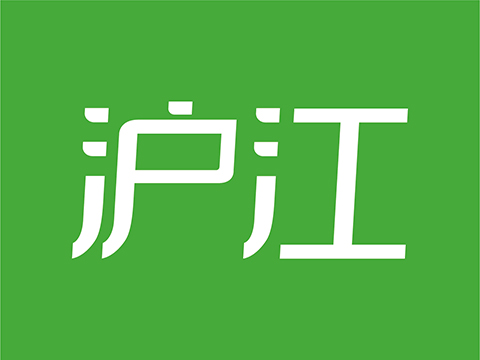一、 定义与讲解
一般现在时:表示经常性的事情,经常性的动作或一般性事实。
时间状语:often 经常,usually通常,always 总是,every每个,sometimes 有时,at „在几点钟 只有在第三人称单数用动词的“三单变化”,其他用动词的原形。
三单变化:
1.多数在动词后+s play — plays like — likes
(1)直接在动词词尾加-s.
ask---asks work---works get---gets stay---stays
(2)以字母s, x, ch, sh或o结尾的动词,在词尾直接加-es. watch---watches wish---wishes fix---fixes do---does go---goes pass---passes
(3)以“辅音字母加 - y”结尾的动词,要先变y为i再加-es. try---tries study---studies cry---cries fly---flies
2.不规则变化:
be---- is are have----has
二、一般现在时用法
1. 表示经常性,习惯性,永久性的动作或存在的状态.通常与副词sometimes, often, usually, always, every day (year, month ), once (twice, three times) a day,等时间状语连用。 They usually go to school by bike. I take the medicine three times a day. She helps her mother once a week. Mary’s father is a policeman. There are 50 students in my class.
2. 表示客观真理,科学原理,自然现象,等客观事实或格言,谚语等。 The sun rises in the east and sets in the west every day. The man who has never been to the Great Wall is not a real man. Tomorrow is Tuesday. 三、一般现在时的句子转换:
(1)当句子中有be动词或情态动词时,则把be动词或情态动词(can,could等等)提到主语的前面变成疑问句;在be动词或情态动词后面加not变成否定句.
例:①陈述句:She is a student. 疑问句→ Is she a student? 否定句→ She is not a student.
②陈述句:I can swim. 疑问句→ Can you swim 否定句→ I can not swim.
(2) 当句子中即没有be动词,也没有情态动词时,则在主语前加助动词do (you,以及复数), does(单数she,he,it)变成问句;在主语后谓语动词前加助动词don’t(I,you,以及复数), doesn’t(单数she,he,it)变成否定句,助动词后的动词要变成动词原形。
例:①陈述句:We get up at 7:00 every morning.
疑问句→Do you get up at 7:00 every morning?
否定句→We don’t get up at 7:00 every morning.
②陈述句:She has a little brother.
疑问句→ Does she have a little brother?
否定句→ She doesn’t have a little brother.
1. 一般现在时的概念
一般现在时表示经常的、习惯性的动作或存在的状态。
2. 一般现在时的构成
一般现在时的构成主要有两种形式:
(1)be型:句子的谓语动词只有be(am,is或are):
a.肯定句中,只出现be,如: I am a student.我是一名学生。
b.否定句中,要在be后面加not,如: She isn't a teacher.她不是教师。
c.一般疑问句,要将be放在句子开头(注意句首字母大写),句尾用问号,答语用Yes,主语+be.或No,主语+be+not.如:
—Are you ready?—你准备好了吗? —Yes,I am.—是的,我准备好了。 (—No,I'm not.—不,我没准备好。)
(2)实义动词型:句中的谓语动词为实义动词(也叫行为动词):
a.肯定句中,只出现实义动词,如: I get up in the morning.我早晨起床。
b.否定句中,要在实义动词前面加do(does)+not,do(does)作助动词,本身无意义,常与not缩写成don't(doesn't),如:I don't like vegetables.我不喜欢蔬菜。
c.一般疑问句,要在句子开头加助动词Do(does),句尾用问号,简略答语用Yes,主语+do(does).或No,主语+do(does)+not.如:
—Do you like oranges?—你喜欢桔子吗?
—Yes,I do.—是的,我喜欢。
(—No,I don't.—不,我不喜欢。)
3.一般现在时的用法
1)经常性或习惯性的动作,常与表示频度的时间状语连用,如: every…, sometimes, at…, on Sunday等。
I leave home for school at 7 every morning. 我每天早上7点去上学。
2)客观真理,客观存在,科学事实。
The earth moves around the sun. 地球绕着太阳。
Shanghai lies in the east of China. 上海位于中国的东部。
3)表示格言或警句中。
Pride goes before a fall. 骄者必败。
注意:此用法如果出现在宾语从句中,即使主句是过去时,从句谓语也要用一般现在时。 例:Columbus proved that the earth is round.
4)现在时刻的状态、能力、性格、个性。
Xiao Wang writes good English but does not speak well.
小王的英语书面表达能力比口语好。
比较:Now I put the sugar in the cup.
I am doing my homework now.
第一句用一般现在时,用于操作演示或指导说明的示范性动作,表示言行的瞬间动作。再如:Now watch me, I switch on the current and stand back. 第二句中的now是进行时
